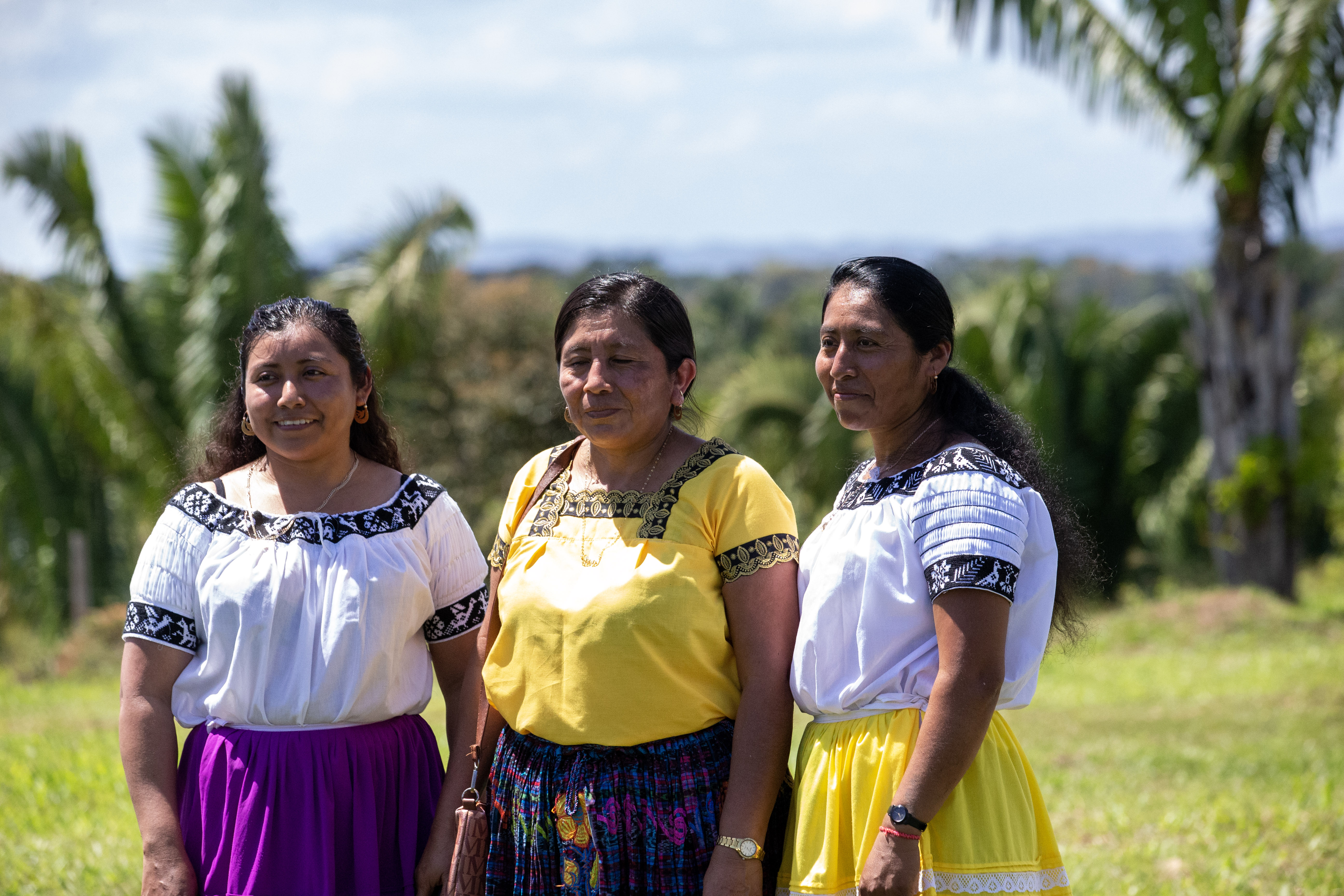Toledo is Belize’s southernmost and least populated district. In this remote region covered by rainforest rich in biodiversity, most of the population still speaks native Mayan languages. The local economy revolves around subsistence agriculture, and many residents work as farmers. Until a decade ago, Florentina Choco was one of them.
Florentina lived in Santa Teresa, a small rural village with no electricity, like many others in Toledo. At night, only the dim lights of candles and homemade kerosene lamps illuminated the households, producing harmful fumes and posing a fire hazard. It was hard for adults to work and for children to study in the dark, and the community had no way of using electronic devices or any kind of electric appliances, like refrigerators to conserve food.
 Florentina Choco (center), and sisters, Miriam and Cristina Choc, three Indigenous women who studied engineering at Barefoot College, India, brought solar energy to the most remote villages in the Toledo District, Belize. Photo: Mark Miller/Plenty Belize-UNDP GEF SGP
Florentina Choco (center), and sisters, Miriam and Cristina Choc, three Indigenous women who studied engineering at Barefoot College, India, brought solar energy to the most remote villages in the Toledo District, Belize. Photo: Mark Miller/Plenty Belize-UNDP GEF SGP
Ten years later, Santa Teresa’s dark nights are a distant memory thanks to Florentina, who now lives in the town of Punta Gorda, where she is building a career as a solar power engineer and studying to earn her high school diploma. “I feel very proud of myself because I helped my community.” – Florentina Choco
Life in Santa Teresa began to change in 2013, when the non-profit Plenty Belize offered the community an opportunity to send two local women to India, where they would learn how to install, maintain, and repair small household solar power systems.
Though she would have to travel solo, Florentina made the hard decision of leaving her family behind for six months and make her way to the other side of the world to learn about something that was completely new to her: “I never gave up because I wanted to help my community. I wanted to help the school children have light at home to do their homework. My aim was to complete my training and come home with my skills”.
Her hard work paid off; after nearly two years waiting for all the materials needed, Florentina was finally able to provide 68 households in her community with 100 watts and 40 watts solar systems, as well as solar-powered lanterns, directly benefitting nearly 400 villagers.
Solar mamas
Florentina is one of over 3,500 rural women from 93 countries who have become ‘Solar Mamas’ after training at Barefoot College International in Rajasthan, India.
The Solar Mamas have gone on to install 175,000 solar systems in villages around the world and share what they’ve learned with their local communities. This South-South cooperation programme not only trains students to become solar technicians, but also teaches them about women’s rights, health and safety, environmental stewardship, English language skills, and tech literacy. Since rural women are frequently illiterate – compounded by language barriers - the programme utilizes visual learning tools and focuses on practical demonstrations and hands-on learning experiences.
The small solar systems that Solar Mamas learn to install and maintain are crucial for the socio-economic development of their communities. Not only do they help combat climate change by replacing carbon-emitting candles and kerosene lamps with a clean and renewable energy source, these systems also protect the health of villagers who no longer have to inhale hazardous smoke and fumes. With photovoltaic electricity, children can study at night and their academic performance improves, while adults can use electronic devices and appliances to enhance their livelihoods.




